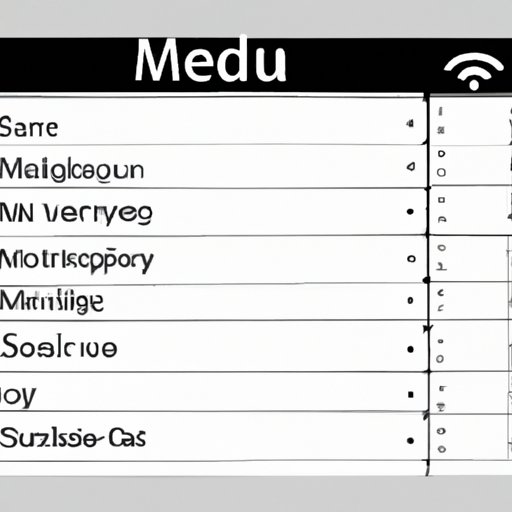Introduction
If you’re passionate about cooking and have dreams of owning your own business, starting a cooking business might be right for you. But before you get started, it’s important to understand the regulations and licensing requirements that apply in your local area. In this article, we’ll explore the different steps you need to take to get your cooking business up and running.
Research Regulations and Licensing Requirements
Before you launch your cooking business, you’ll need to research the regulations and licensing requirements in your local area. Depending on where you live, these can vary significantly. For example, some areas may require you to obtain a food service license in order to operate a commercial kitchen. Other regulations may include health and safety standards, zoning laws, and building codes. It’s important to research these regulations so you can ensure that you’re complying with all applicable laws and regulations.
In addition to researching local regulations and licensing requirements, you’ll also need to obtain insurance for your business. This will help protect you from any potential liability issues that may arise from operating a cooking business. Speak with an insurance provider to learn more about the types of coverage you may need for your business.
Develop a Business Plan
Once you’ve researched the regulations and licensing requirements in your area, you’ll need to develop a business plan. A good business plan should include a description of your business, your goals and objectives, and the strategies you’ll use to achieve those goals. You’ll also need to include financial projections based on your estimated startup costs, sales volume, and overhead expenses. Creating a business plan will help you stay organized and focused as you move forward with launching your cooking business.
Secure Financing
Next, you’ll need to secure financing for your business. There are a few different sources of financing available for small businesses, including bank loans, government grants, and private investments. Each source of financing has its own requirements and eligibility criteria, so it’s important to do your research and find the option that works best for you. Additionally, you’ll want to create a budget for your business and stick to it as closely as possible.
Choose a Location
Choosing the right location for your cooking business is critical. When selecting a location, you’ll need to consider factors such as ease of access, parking availability, and customer convenience. You’ll also need to decide whether to lease or buy a space. If you’re leasing, make sure to read the lease agreement carefully and ask questions if anything isn’t clear.

Create a Menu of Services and Products
Once you’ve secured a location, you’ll need to create a menu of services and products that you’ll offer. Consider the types of food you’ll prepare, how you’ll market your business, and what pricing structure you’ll use. You may also want to create a website or social media presence to help spread the word about your business.
Conclusion
Starting a cooking business requires a lot of planning and preparation, but it can be a rewarding experience. To get started, you’ll need to research the regulations and licensing requirements in your area, develop a business plan, secure financing, choose a location, and create a menu of services and products. With the right plan in place, you can be well on your way to success with your new cooking business.
(Note: Is this article not meeting your expectations? Do you have knowledge or insights to share? Unlock new opportunities and expand your reach by joining our authors team. Click Registration to join us and share your expertise with our readers.)
